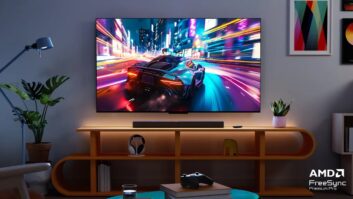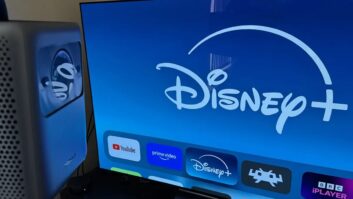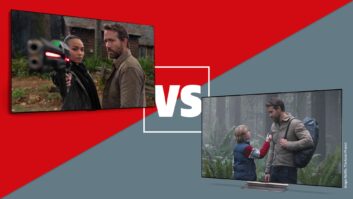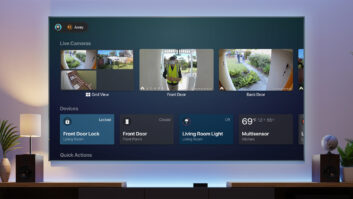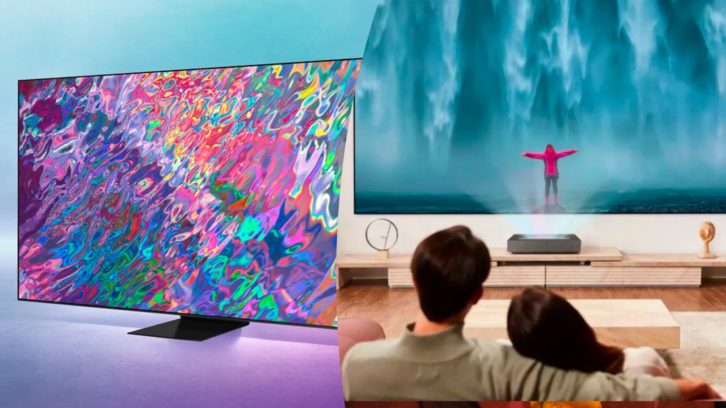
Whenever someone asks what’s the best TV they should buy, my first question back to them is, “how much space do you have?” Generally, I’m of the belief that you should buy the biggest TV size you can accommodate without causing awkward viewing angles.
There is a science to what TV size you should buy, but I am not a scientist. Instead, I’m someone who pays attention to TV trends. One of the trends is the demand for bigger TVs, at least in part caused by people wanting to watch more movies and shows with high production values from the comfort of their homes.
Over the past few years, we’ve watched the best TV brands develop large-scale versions of their OLED and QLED sets. Especially for popular flagships, such as the LG C2 OLED TV, size ranges have grown to include screens of 80 inches or larger. If you have the space and budget for these big screens, they make even average movie nights memorable.
But I think we’re entering an era of overkill. As in, TVs are officially getting too big. Both LG and Samsung are selling absolute behemoths of screens, with a 97-inch OLED TV and 98-inch QLED TV respectively. I’ve gone hands-on with both, and while they deliver the wow factor, they’re also impractical for 99% of people. Why? Price, of course.
The massive LG G2 OLED TV costs $25,000 and Samsung QN100B Neo QLED TV costs $40,000. Though these premium prices are for premium customers, the values simply don’t add up for me when considering the prices of each brand’s next-largest sets. The 83-inch LG G2 OLED TV is currently listed for $4,800 on LG’s website and the 85-inch Samsung QN90B (which is technically the same product line as the QN100B) is on sale for $2,800 with Black Friday deals.
There’s one giant set I’d consider an exception, and it’s TCL’s 98-inch XL QLED TV. It costs $8,300, which is more accessible but still out of most people’s TV budgets. Manufacturing these monstrous screens is more expensive, given fewer factories are equipped for making on a mass scale. Until that changes, there’s a more cost-effective solution to bringing the big screen home: a projector.
Should you buy a projector instead of a TV?
Now, I’m not talking about cheap projectors with middling brightness and contrast. I’m specifically suggesting ultra-short throw projectors (sometimes branded Laser TVs) that create 100- to 130-inch screens just inches away from the wall or projection screen. LG’s HU915QB CineBeam, which has a rated brightness of 3,000 ANSi lumens, is optimally placed 7.2 inches away from the wall to produce a 120-inch screen, for example. It costs $6,500.
Samsung’s The Premiere and Hisense’s L9G 4K Laser TV are other premium models that are relatively more affordable than 100-inch TVs. The 130-inch Premiere costs $6,500, while the 120-inch L9G can be found for $5,000.
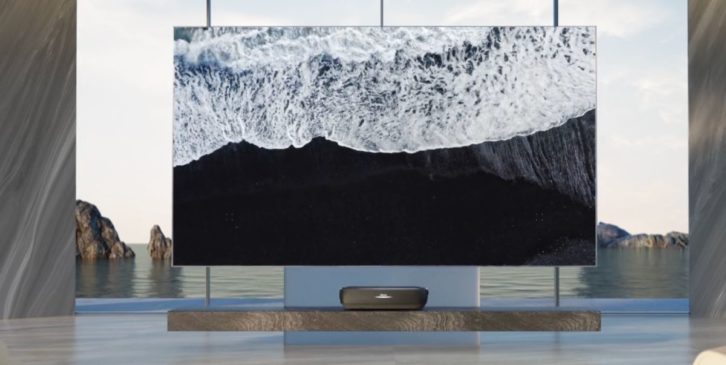
For a projector to be considered a Laser TV, it must be able to be watched during the daytime as well as at nighttime. The internal light source must also last at least 20,000 hours without brightness deteriorating. That’s about as long as a normal TV should last, so a Laser TV wouldn’t be used as a temporary replacement for the best OLED TVs or best QLED TVs, it would be your TV.
There are perhaps more add-ons you’d need for a projector compared to a TV. For one, you need a cabinet to place it on. You could use any standard entertainment console from IKEA, though there are also custom cabinets designed to house short-throw projectors in a more aesthetically-pleasing way.
You’ll also want to get a legitimate projection screen — the white sheet you use for backyard movie nights won’t cut it. For a full theater experience, surround sound speakers are also a must. If you want to make it feel premium, I’d budget about $1,000-$2,000 for this equipment.
Benefits of a TV vs. a projector
The downside of projectors is that they can only offer so much in terms of picture performance. Even the best projectors cannot achieve the black levels of OLED or color volume of quantum dots. That said, if screen size is your priority, a short-throw projector is a more affordable route to go.
On the other hand, if your space would be just as well suited with an 83- or 85-inch TV, that’s truly the ideal scenario. In fact, these TVs have plenty of screen real estate for most people. Paired with one of the best soundbars and a comfy couch, you have an entertainment space I know I’d never want to leave. These days, you can make an incredible space without spending your life’s savings.
Yet there are select customers with mansions or extremely large homes that need a huge screen to match, want a TV’s picture quality and don’t have to mind their budget. If that’s you, I won’t stand in your way of shopping for 97-inch and 98-inch TVs. I’m just hoping for the rest of us commoners that they become more affordable in a few years.
This article originally appeared on tomsguide.com
About the Author
Kate Kozuch is an editor at Tom’s Guide covering smartwatches, TVs and everything smart-home related. Kate also appears on Fox News to talk tech trends and runs the Tom’s Guide TikTok account, which you should be following. When she’s not filming tech videos, you can find her on an exercise bike, mastering the NYT Crossword or channeling her inner celebrity chef.
See also: Most Smart TV Owners Still Use An External Streaming Device







